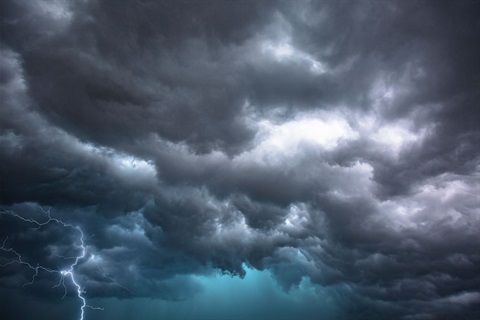Tropical Tornadoes
Published on October 08, 2024

Hurricanes are mostly known for the wind, surge, and rain threats that come with them. Tornadoes tend to arrive in the outer bands of a hurricane. Tropical tornadoes are formed with elevated wind shear as the outer band, known as squall lines, move onshore. The outer bands shoot off and away from the center of circulation and move quickly.
As they move onshore, the wind at the surface begins to slow down. But higher in the atmosphere, the wind remains strong. This contrast is known as wind shear – a change in wind speed (or direction) at different heights in the sky. This will create quick, but frequent, spin-up tornadoes. These are typically very short-lived and weak compared to the large supercell tornadoes from single-rotating thunderstorms.
When a Tornado Watch is issued, tornadoes are possible. Remain alert for approaching storms. Watch the sky and stay tuned to NOAA Weather Radio, commercial radio, or television for information. When a Tornado Warning is issued, a tornado has been sighted or indicated by weather radar. Take shelter immediately.
Tornado Safety Tips
The National Weather Service (NWS) advises everyone to have a severe weather plan and to practice with their family. Talk them through it and get them involved, so you can be prepared.
Your emergency plan should include a safe room that can be used as an emergency shelter. That room should be a windowless interior room such as a hallway, bathroom, or closet on the first floor of the house. According to the NWS, the majority of injuries and fatalities from tornadoes are not due to people being lifted from the ground, but from flying debris and glass. So, avoid windows and exterior rooms.
You can add a layer of protection by getting under a very heavy table or covering yourself with a blanket, sleeping bag, or mattress to shield your body from sharp shards of glass, metal, or other broken objects. Your plan also should include an emergency meeting location and emergency contact information.
The NWS recommends you continue to monitor local news or listen to an NOAA weather radio to stay updated on conditions and look for approaching storms.
Here are some danger signs to look for:
- Dark, often greenish sky
- Large hail
- A large, dark, low-lying cloud (particularly if rotating)
- Loud roar, similar to a freight train
If you see an approaching tornado or any danger signs, be prepared to take shelter immediately.